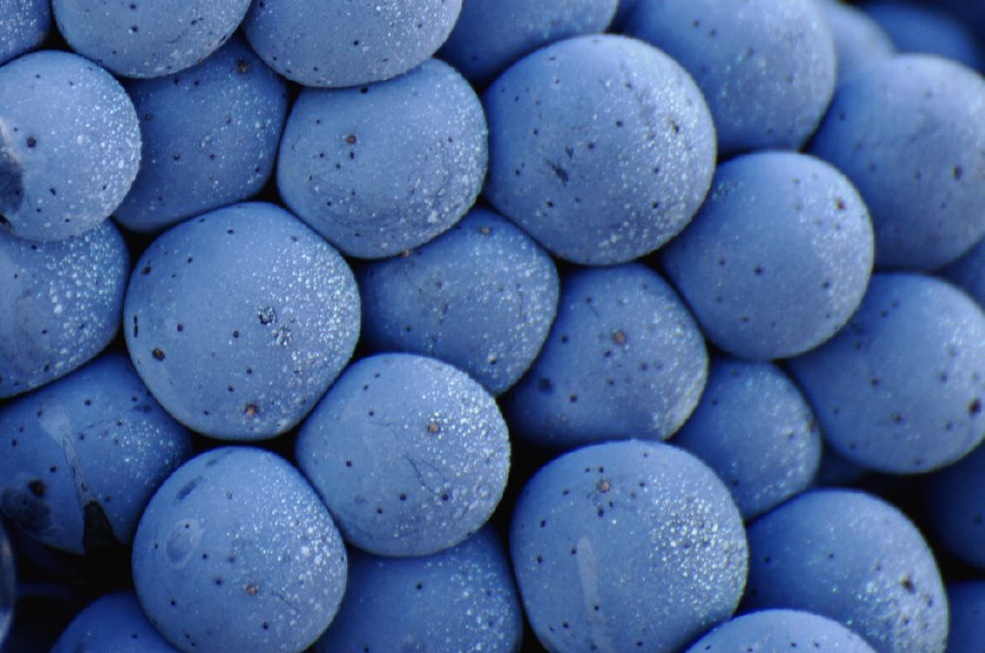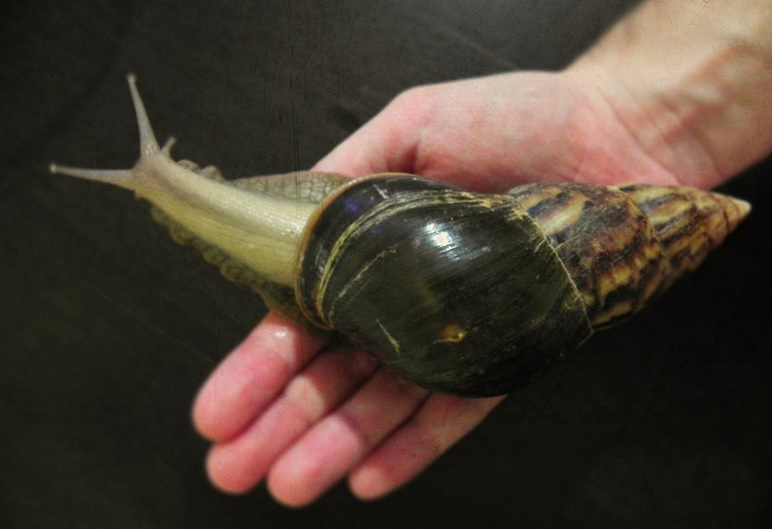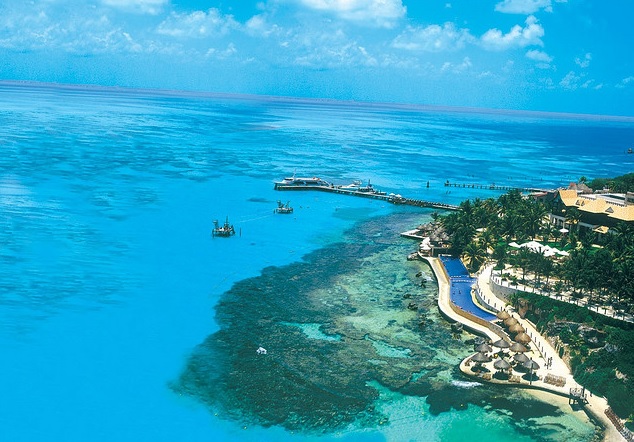Peru invests in science
by Ivan Fernando Gonzalez Continue reading Peru invests in science
Science news out of Latin America
by Ivan Fernando Gonzalez Continue reading Peru invests in science
BRAZIL Brazil has declared a state of emergency in Mato Grosso, its main crop growing state, due to an infestation from an invasive caterpillar in corn, soy and cotton crops. Last summer, the pests caused $4.7 billion in damage. [inlinetweet prefix=”” tweeter=”” suffix=”via @LatAmSci”]Rio de Janeiro is having sewage problems at the site of its … Continue reading Peru’s disappearing glaciers, a state of emergency in Brazil due to a caterpillar, and Rio de Janeiro’s sewage problems.
AMAZON More than 400 new species have been cataloged in the Amazon, says the World Wildlife Fund. ARGENTINA Argentine scientists have been studying whales off the coast of Patagonia for more than 30 years. Monitoring has been happening off the coast of the Península Valdés and 150,000 aerial images of 2,850 whales have been taken. Scientists at … Continue reading Monitoring whales in Argentina, gold mining and deforestation in Peru, and measuring biodiversity in the Amazon.
PERU Activists videotape the slaughter of dolphins off the coast of Peru. t.co/GRXDLE7mrw Corruption in Peru Aids Cutting of Rain Forest here. ARGENTINA AP finds deadly consequences of pesticide use in rural Argentina, dangerously close to schools here. BRAZIL Researchers in São Paulo develop nanoparticles to detect leukemia here. A fire in Brazil’s largest port burns … Continue reading Dolphins slaughtered off Peru’s shores, leukemia therapy in Brazil and tree species in the Amazon.
ANTARCTICA An international team of scientists will study the melting of Antarctica’s Pine Island Glacier, which is currently melting at a rate of 6 centimeters per day. The team will measure glacier’s motion, map the bed of the glacier and explore the geology beneath the ice. ARGENTINA The National Institute of Agricultural Technology created a … Continue reading Using cassava to produce electricity in rural Colombia, teasing apart Chile’s salmon virus, and new coral discoveries in Latin America.
ARGENTINA
Scientists, patients and government entities in Argentina have reached an agreement to legislate stem cell therapies. The law “should address the scientific and therapeutic aspects of these cellular tools, always from a bioethical perspective, while guaranteeing the health protection of citizens,” stated Lino Brarañao, Argentina’s Minister of Science and Technology.

Recently, Argentina’s Ministry of Agriculture, Livestock and Fisheries passed a resolution for the evaluation of genetically modified crops like sugarcane and potatoes. This measure will allow two national institutions to progress in obtaining glyphosate tolerant sugarcase.
Argentine companies are working on breeding programs to increase protein levels in the soybean.
BOLIVIA
An international group of scientists led by Italian geographer Umberto Lombardo and Bolivian archaeologist José Capriles found in the Bolivian Amazon evidence of humans dating back 10,400 years. Their analysis concludes that hunter-gatherers settled there in the early Holocene. The work was published in the journal Plos One.
 |
by Ali Hendren
In 1988 at an agribusiness expo in Curitiba in southern Brazil, giant African land snails (Achatina fulica) were heralded as a promising new food source to replace smaller escargot snails. The introduction at the fair was so widely advertised and aggressively marketed that commercial breeders, cooperatives and even private homeowners began rearing the snails–endemic to eastern Africa–immediately with kits sold at the expo.
“The snails were supposed to represent social and economic progress for Brazil,” says Roberto Vogler, an Argentine scientist who studies the snails along the border his country shares with Brazil. “They were going to position the country as the world’s leading supplier of escargot.”
But a booming escargot market in Brazil never materialized. Many of the smaller producers had neither the means to properly process the meat nor the public demand to drive a now flooded market. Frustrated with their failed investment, operations were abandoned and snails were released into the wild in overwhelming numbers.
Today, the infestation has spread throughout Latin America–and not at a snail’s pace. They’ve invaded 24 of Brazil’s 26 states, spread through Venezuela and Colombia and have breached the borders of Paraguay, Argentina, Ecuador and Peru–posing both an agricultural and a public health threat. The snails are sweeping the continent carrying parasites and an appetite for most any crop.
The snails’ pace
On paper, the introduction of A. fulica for escargot farming in Brazil appeared promising. The snails are larger Continue reading “Giant African land snails are invading Latin America”
ANTARCTICA
Rising water temperatures will reduce the extent of krill habitat in Antarctica, say researchers.
ARGENTINA
A robot has been created by scientists in Mendoza for watering gardens. The system uses a similar technology to that used to detect movement in video games and moves around the garden on three wheels.

The Argentine Council for Information and Development of Biotechnology (ArgenBio) celebrates ten years of continuous broadcasting about biotechnology. Its educational program “Why Biotechnology” has trained more than 13,000 teachers across the country and worked with public and private entities in developing biotechnology in Argentina and Latin America.
BRAZIL
The Boticario Foundation for Nature Protection has launched a campaign aimed at the general public to raise awareness about the endangered jaguar (Panthera onca) which inhabits the Pantanal (a wetlands shared by Argentina, Brazil and Bolivia).
CARIBBEAN
80% of Caribbean coral reefs have been lost for many reasons, one being the attack of a bacterium that kills the coral. Eugene Rosenberg, a scientist at the University of Tel Aviv, identified phages that can control the bacterial attack and recover reef health. Continue reading “A bacterium hurting coral reefs in the Caribbean, a farmers strike in Colombia, and a tomb found in northern Peru.”
A new census of Andean condors taken near Chile’s capital of Santiago has tallied 300 birds. Started in 2011, researchers and volunteers have counted the soaring birds three times a year from six different observation stations on the mountains surrounding the city. They want to learn more about their country’s national bird—the Andean condor’s seven-foot wingspan and taste for carrion are some of the few things researchers know about these scavengers.

|
“Our numbers are preliminary but clearly valuable because 300 is higher than condor populations counted in other countries,” says Victor Escobar, an independent biologist working with the Chilean ornithology group R.O.C. which led the census. According to Escobar, Bolivia has counted 80 Andean condors (Vultur gryphus) in the Apolobamba range while 200 have been counted near Rio Negro in Argentine Patagonia. “Unfortunately, we don’t have numbers for the entire Andean range,” he says. “But that’s why we started this project.”
Researchers estimate there are around 10,000 Andean condors living throughout the Andes mountains — from northern Colombia to the tip of Patagonia. Though poaching has driven down numbers in Venezuela and Colombia, populations are generally thought to be stronger further south. Condor censuses are sporadic and generally local in nature.
Continue reading “Andean condor census in Chile finds 300 birds near Santiago”
ARGENTINA CONICET scientists have developed and field-tested potatoes resistant to Potato Virus Y (PVY), which causes losses of between 20% and 80% of the crop depending on the severity of the infection. Field tests concluded that there was no PVY infection in the genetically-modified plants, while among those not modified, the rate of infection was … Continue reading Costa Rica moves to close its zoos, coca and alcohol used in Incan human sacrifice, and Usain Bolt’s superhuman abilities.
ARGENTINA Argentine researchers looking at the eating habits of Magellanic penguins discovered that each penguin can capture an astounding number of prey items per foraging trip. These include anchovy, hake, sardines, mackerel, octopus and squid in Argentine waters. Considering this level of consumption and the number of penguins that inhabit the Argentine coast (900,000 pairs), … Continue reading A bird of prey faces extinction in Central America, the voracious Magellanic penguins of Patagonia, and a new electric car in Chile.
ARGENTINA Only 800 hooded grebes–a bird living in Santa Cruz Patagonia–are left in the world. A science writer flies to Argentina to take a look. An Argentine researcher has published a study in PLoS ONE that explores empathy and its role in moral judgments. Read more on Eze’s blog here. Press release here. A study … Continue reading Brazil successfully clones a cow from a fat cell, great white shark research in Mexico and Peru finds more dead animals on its coasts.
ARGENTINA The Pan American Health Organization has approved a drug manufactured in Argentina against the parasitic disease Chagas. Benznidazol will be produced by two private laboratories with additional government funding. It’s the first line of treatment for Chagas disease and cures 80-90% of cases, according to the WHO. Argentina’s Leloir Institute recently discovered an enzyme, … Continue reading An alpaca biotechnology center in Peru, combating Chagas disease in Latin America, and the effects of intensive agriculture in Brazil.
ARGENTINA Scientists at the Universidad Nacional de Buenos Aires have determined that the use of the herbicide glyphosate is unnecessary for stimulating grass growth in Argentina. Winter is a critical season for grass production on the plains outside Buenos Aires and the period also coincides with calving cows, meaning grass needs to be available. Through … Continue reading Peruvian mummies had clogged arteries, improving biofuels in Argentina and supporting coffee research in Costa Rica.
ARGENTINA Argentina’s government has created two new marine protected areas in Patagonia: Isla Pingüino Coastal Marine Park and Makenke Coastal Marine Park. Isla Pingüino covers nearly 1,800 square kilometers (720 square miles) of ocean and coastline while Makenke covers 600 square kilometers (230 square miles). The areas will protect red-legged cormorants, sea lions, penguins, and dolphins, among … Continue reading Monarch butterfly numbers have fallen by 59 percent, Chile inaugurates its ALMA telescope, and Central America expands GMO food production.
ARGENTINA Diabrotica, better known as the corn rootworm, is a pest beetle that causes major losses in the corn crop. Because the larvae develop underground, root growth is hindered and yield is affected. To control the pest, researchers have developed Diabrotica-resistant transgenics and rotated crops to disrupt their lifecycle. Scientists from the University of Buenos … Continue reading Controlling corn pests in Argentina and Mexico, the coffee growers’ strike in Colombia, and orcas beached off Chile’s Patagonia coast.
BOLIVIA Heavy rains have affected more than 9,600 families in Bolivia, says the country’s minister of defense. Flooding, landslides and lightning storms have caused the deaths of 18 people in Bolivia. CHILE A Chilean town in the Atacama desert has uncovered several mummies from both its graveyards, some 2,000 years old. The municipal museum of … Continue reading Mining sparks deadly battles over water supplies in Peru, 2,000 year old mummies discovered in Chile, and heavy rains take a toll in Bolivia.